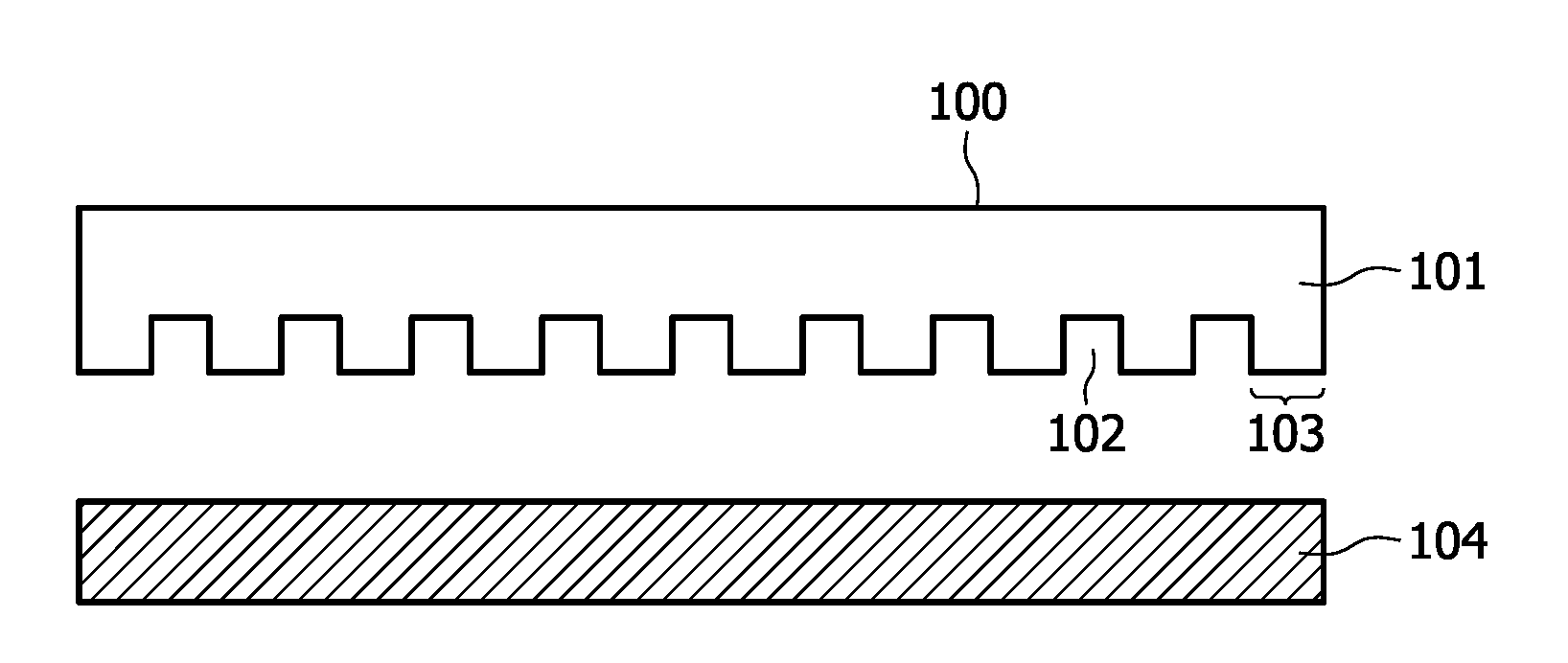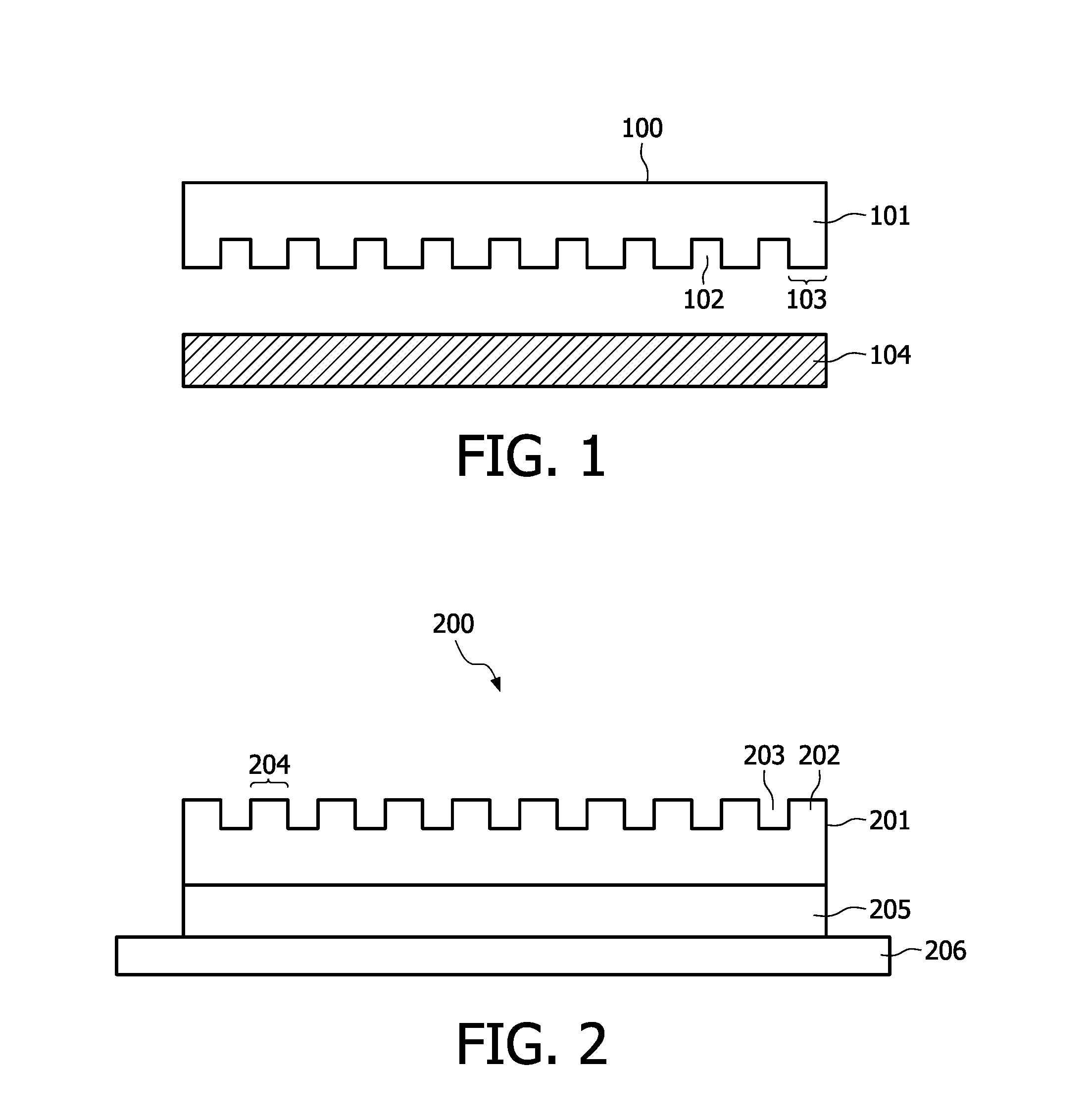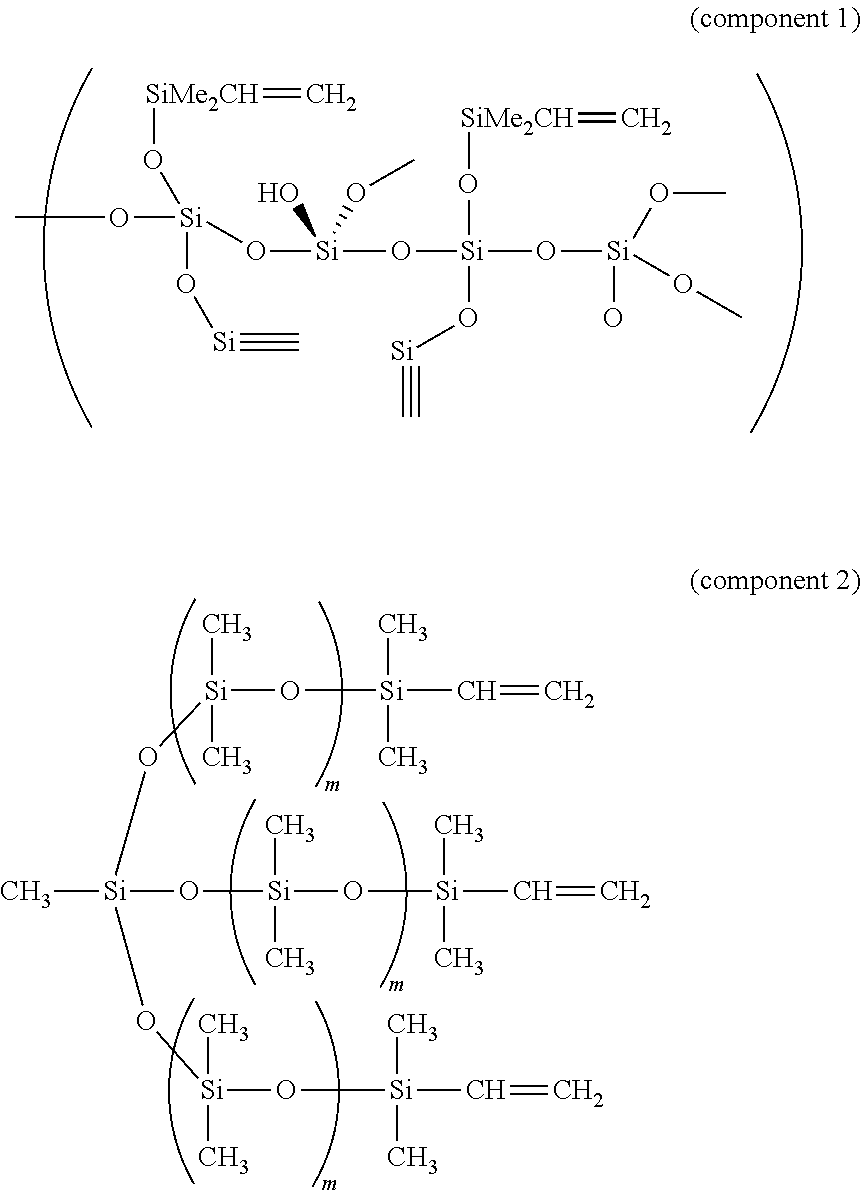Silicone rubber material for soft lithography
a technology of soft lithography and silicon rubber, which is applied in the field of silicon rubber like materials, can solve the problems of poor accommodation on rough and non-flat surfaces, subject to problems, and conventional pdms materials are susceptible to rounding of sharp corners, and achieves the effects of avoiding the disadvantages of high incubation temperatures, high incubation temperatures, and simple and inexpensive construction
- Summary
- Abstract
- Description
- Claims
- Application Information
AI Technical Summary
Benefits of technology
Problems solved by technology
Method used
Image
Examples
Embodiment Construction
[0049]The present invention relates to a silicone rubber like material comprising at least one T branched and / or Q branched (poly)siloxane precursor crosslinked by at least one linear polysiloxane, wherein said material has a Young's modulus in the range of from 7 MPa to 80 MPa.
[0050]As used herein the term “T branched (poly)siloxane precursor” refers to a silicone material comprising a network of oligosiloxanes, wherein one or more silicone atoms are bound by at least three oxygen atoms to other silicone atoms. The term “Q branched (poly)siloxane precursor” refers to a silicone material comprising a network of oligosiloxanes, wherein one or more silicone atoms are bound by at least four oxygen atoms to other silicone atoms.
[0051]The T branched (poly)siloxane precursor is able to form 3-way branching chains, i.e. networks, when crosslinked by linear polysiloxanes, typically linear PDMS chains. Likewise, the Q branched (poly)siloxane precursor is able to form 4-way branching chains, ...
PUM
| Property | Measurement | Unit |
|---|---|---|
| Young's modulus | aaaaa | aaaaa |
| temperature | aaaaa | aaaaa |
| temperature | aaaaa | aaaaa |
Abstract
Description
Claims
Application Information
 Login to View More
Login to View More - R&D
- Intellectual Property
- Life Sciences
- Materials
- Tech Scout
- Unparalleled Data Quality
- Higher Quality Content
- 60% Fewer Hallucinations
Browse by: Latest US Patents, China's latest patents, Technical Efficacy Thesaurus, Application Domain, Technology Topic, Popular Technical Reports.
© 2025 PatSnap. All rights reserved.Legal|Privacy policy|Modern Slavery Act Transparency Statement|Sitemap|About US| Contact US: help@patsnap.com



